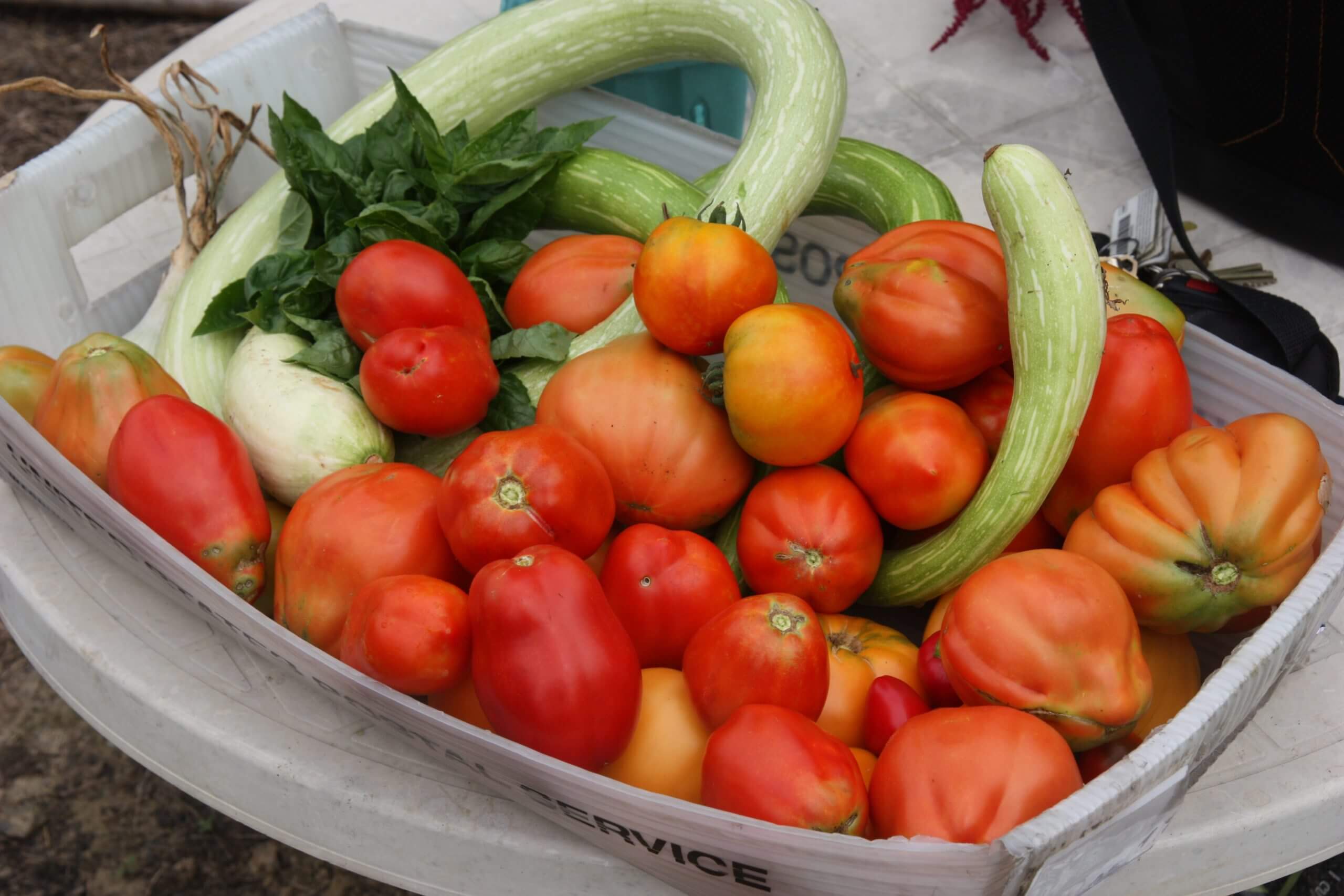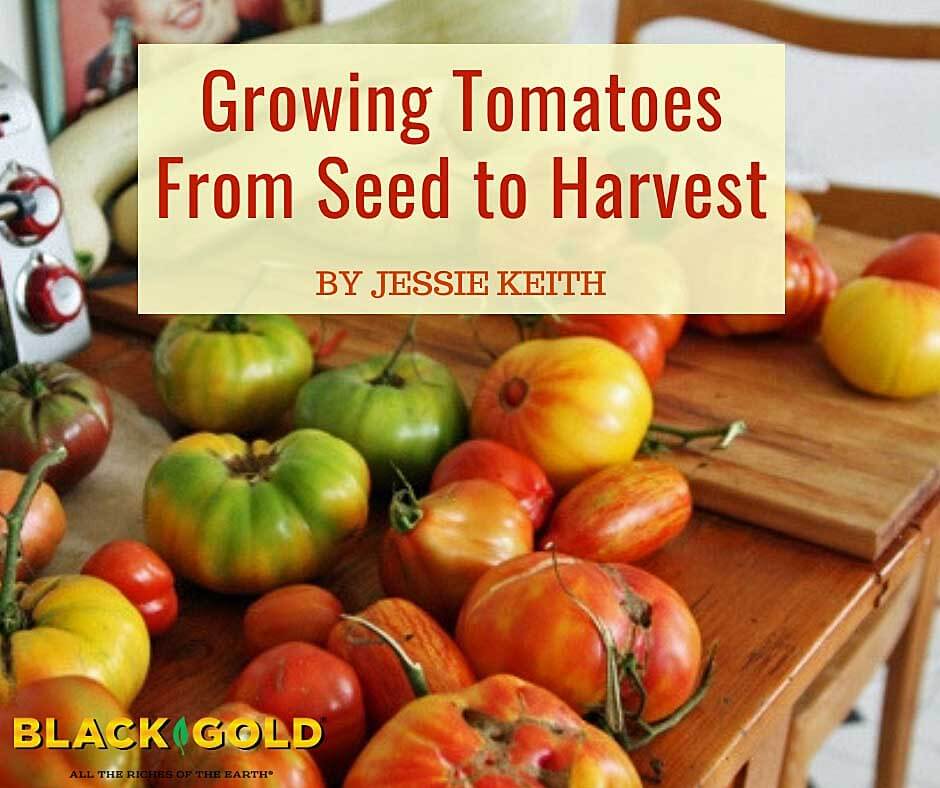
Homegrown summer tomatoes simply taste better. That’s why they’re the most popular warm-season crop. They are inexpensive to grow and offer big payloads of delicious fruits, which are pricy at farmers’ markets and grocery stores. It pays to grow your own from seed because they are easy to start, and if you grow organically it’s the best way to know that your stock is pesticide-free. And, there are loads of wonderful tomato varieties only offered from seed.
Tomato Basics
- Common Name: Tomato
- Botanical Name: Lycopersicon esculentum
- Days to Harvest: 65 to 85 days after planting, depending on the variety
- Planting Time: After the last frost date
- Light: Full sun
- Soil: Rich, porous, well-drained loam
- Water: Regular water for even moisture
- Temperature: Fruiting is best with 78 -92ᵒ F days and 70ᵒ-80 F nights.
- Fertilization: Quality fertilizer formulated for tomatoes
- Pests: Tomato hornworms and Colorado potato beetles feed on foliage and fruits, causing significant damage.
- Diseases: Plant wilt, leaf damage, fruit damage, or poor performance can be caused by many tomato diseases, including early and late blight, fusarium wilt, tomato mosaic virus, and verticillium wilt.
- Disorders: Blossom end rot (caused by calcium deficiency), splitting/cracking (caused by excessive water or temperature fluctuations), and fruit toughness, cat-facing, and reduced productivity (caused by cool temperatures) are the most common disorders.
Days to Harvest Steps for Tomatoes
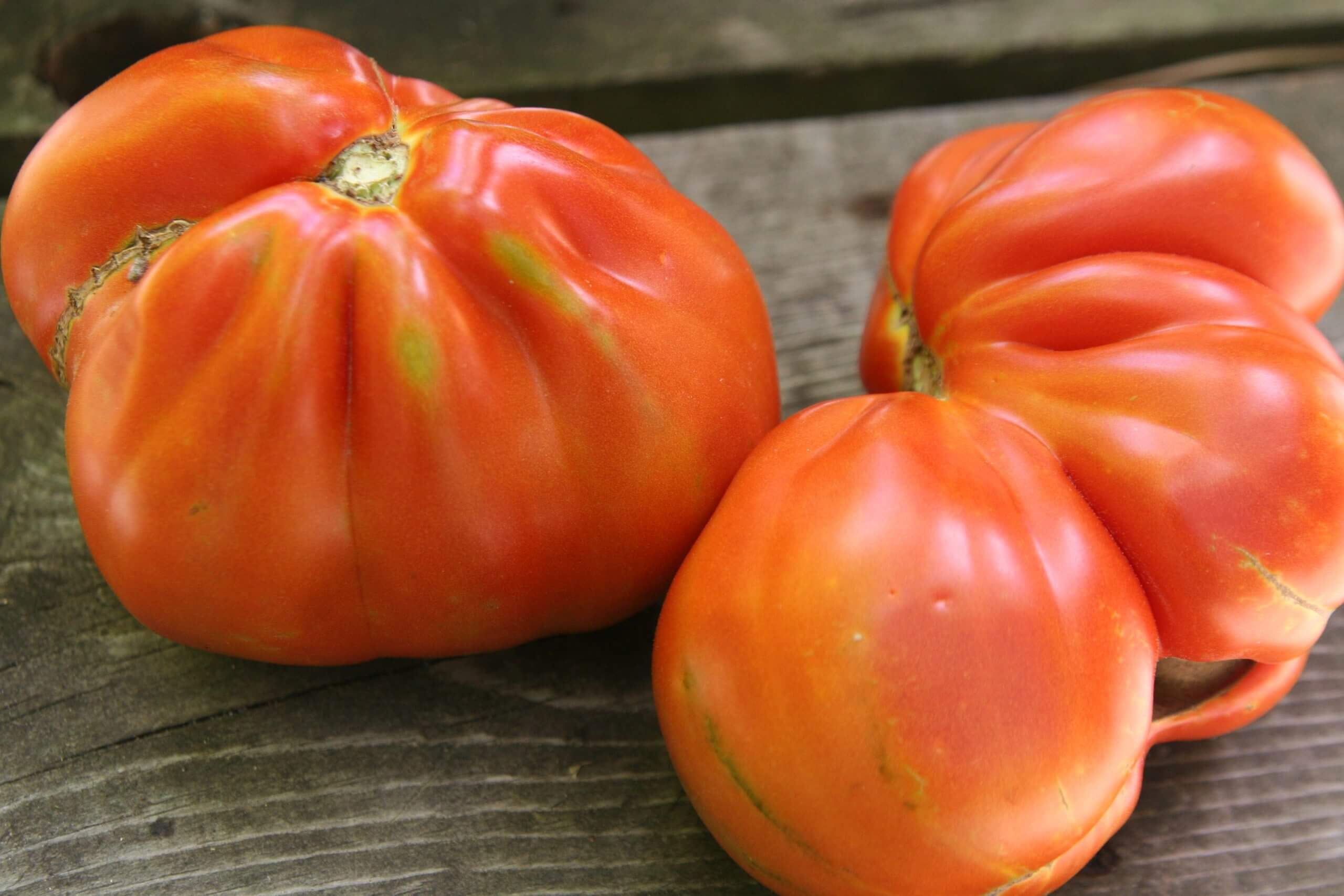
Starting Seeds
It takes around six to eight weeks to grow tomatoes from seed to ready-to-plant seedlings. Start seeds indoors for the best results. Sow seeds in cells filled with OMRI Listed Black Gold Seedling Mix and lightly sprinkle a bit on top to cover. Gently moisten the cells with water, and then place the trays right under the warmth of grow lights. Keep the mix moist but never wet. In 5 to 12 days, your tomato seeds should germinate. Germination is best when temperatures are warm (68°-75° F (20-24° C)). A heat mat for seed starting will dramatically hasten germination. (Click here for more detailed seed-starting instructions.)
Tending Seedlings
Tomato seedlings are delicate and have two lance-shaped seed leaves when they first emerge. The true leaves, which are feathery and divided, appear in 2 to 3 days. At this point, feed seedlings with diluted, water-soluble tomato fertilizer. Keep the soil moist but not wet. Wet soil can encourage fungal diseases that cause seedlings to rot or “damp off.” To avoid leaf burn, lift grow lights up as plants get closer to the bulbs.
Tending Small Plants
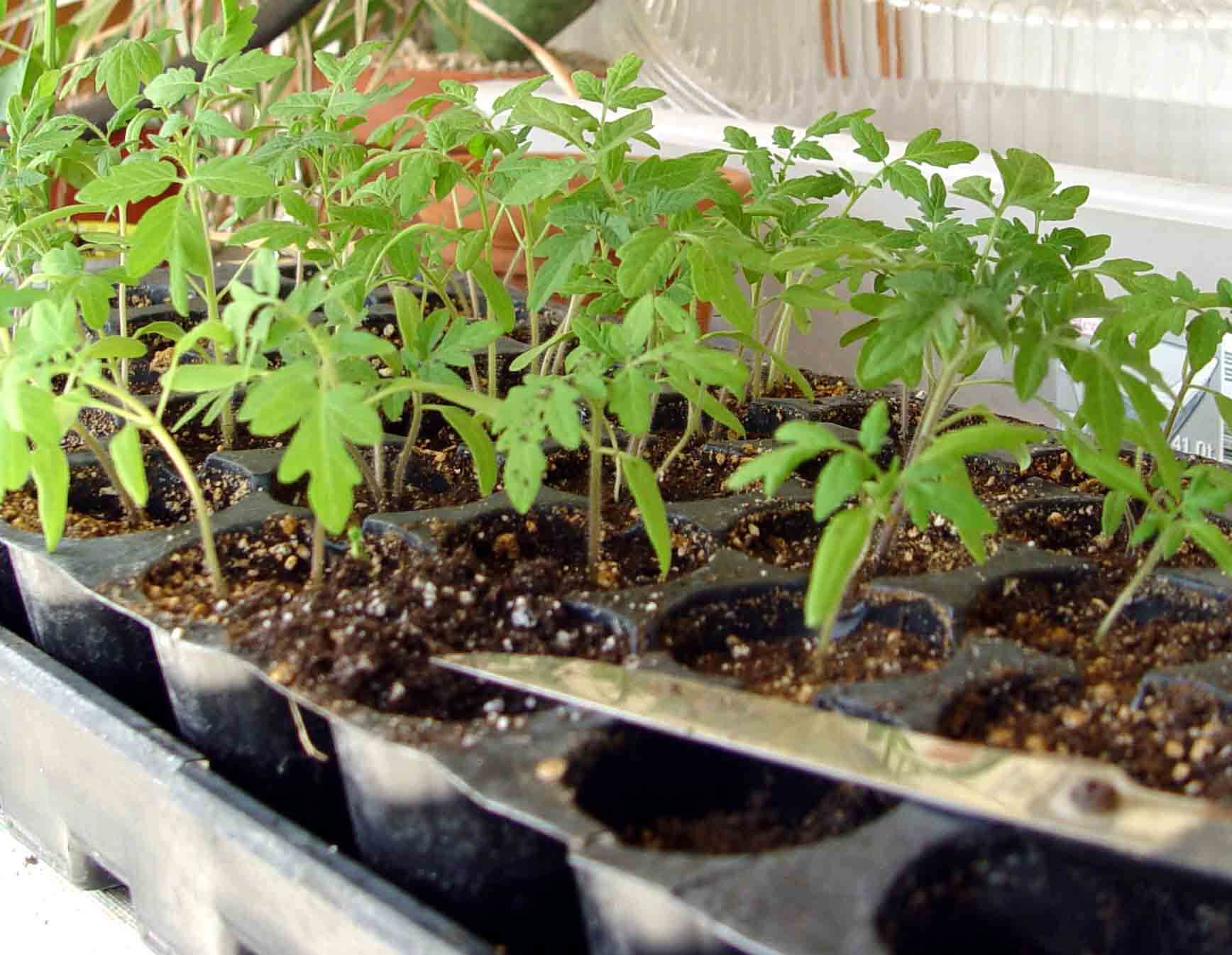
Tomato plants should be around 8- to 10-inches tall and garden-ready after eight weeks. Indoor grown seedlings are tender, have weak stems, and need time to adjust to full sun. If directly planted outdoors, they will develop leaf burn and may die. To avoid this, they need to be hardened off for at least a week before planting. Hardening off means acclimating seedlings from their cushy indoor growing conditions to the windy, sunny outdoors where temperatures fluctuate.
To harden seedlings off, place the potted plants in a protected spot that gets a few hours of sun per day. Each day move them to a new location where they get a little more light and wind each day. After a week or so, they should be tough enough to plant in the garden.
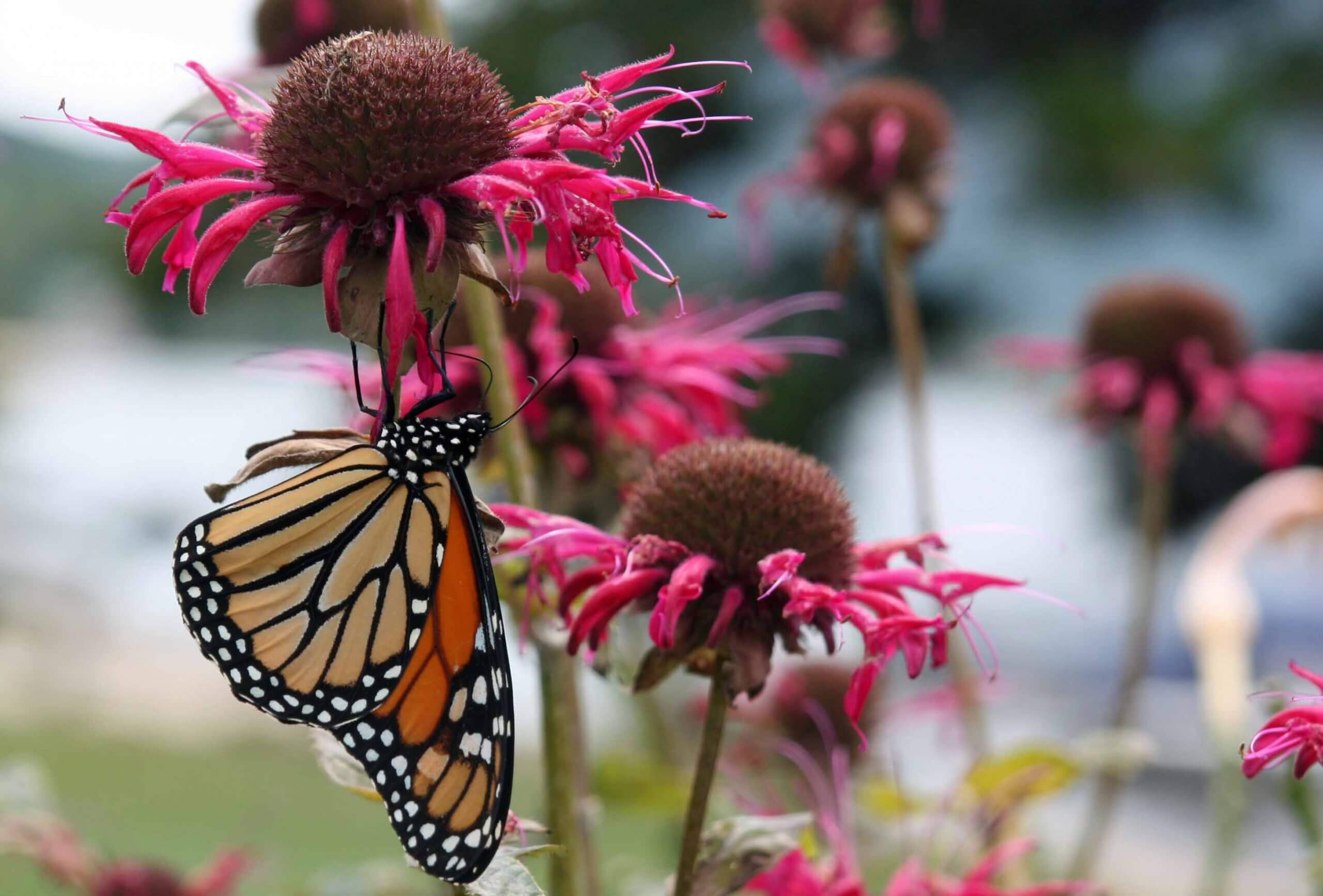
Garden or Container Planting
Choose a good spot for your tomatoes. They require at least 8 hours of full sun and well-drained soil that’s fertile. Vining (indeterminate) types need caging or trellising, while bush (determinant) types need staking; both types benefit from summer pruning.
Before planting in the garden, amend beds by digging and turning the soil deeply and adding rich Black Gold Natural & Organic Compost Blend and an OMRI Listed tomato fertilizer. Plant tomatoes around 4 feet apart and mulch with another 2- to 3-inch layer of Black Gold Natural & Organic Compost Blend. Young plants can be planted deep, with only several leaves above ground–just be sure to gently remove the leaves from all stem parts that will be covered with soil. Water regularly to keep root moist. As plants grow, they will demand more water.
Tomatoes are such aggressive feeders and water hounds that you have to give serious attention to container-grown plants. Start with a really large pot. Determinant tomatoes are best, but indeterminates will also work if you keep them well caged and pruned. A good, water-holding potting soil is perfect for container culture. I recommend Black Gold® Natural & Organic Potting Mix, which also contains Resilience™ for stronger stems and better root development. Container-grown tomatoes need to be watered daily and fed more frequently, but if you give them ample attention, they should thrive and produce beautifully. (Click here to watch a video about how to grow tomatoes in containers.)
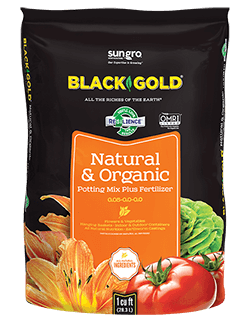 Harvest
Harvest
Tomato fruits develop the best when days are warm (between 78 and 92 degrees Fahrenheit) and nights are warm (at least 70 degrees Fahrenheit). Tomatoes can be harvested green for fried green tomatoes and green tomato chutney, but they are best picked when they are fully ripe (well colored, slightly soft to the touch). Some tomatoes are naturally easy to pull from the vine when mature, while others cling. I always keep a pair of pruning sheers on hand for clingers. If you accidentally harvest a few fruits with a bit of green, let them stand on a sunny windowsill for a couple of days, and they will ripen up right away.
Pruning
Tomatoes can be cut and shaped to keep them from overtaking a trellis or container. Use sharp, clean pruners to cut whole branches back to main stems as needed. Try to maintain productive fruit and flower-laden branches, if at all possible. As a precautionary measure, it’s wise to dip pruners in a 10% bleach solution when pruning from plant to plant, just to avoid the possibility of spreading disease. Dip and wipe the pruners after pruning one plant and going to another. (Click here for a video about how to prune cherry tomatoes.)
Tomatoes to Try
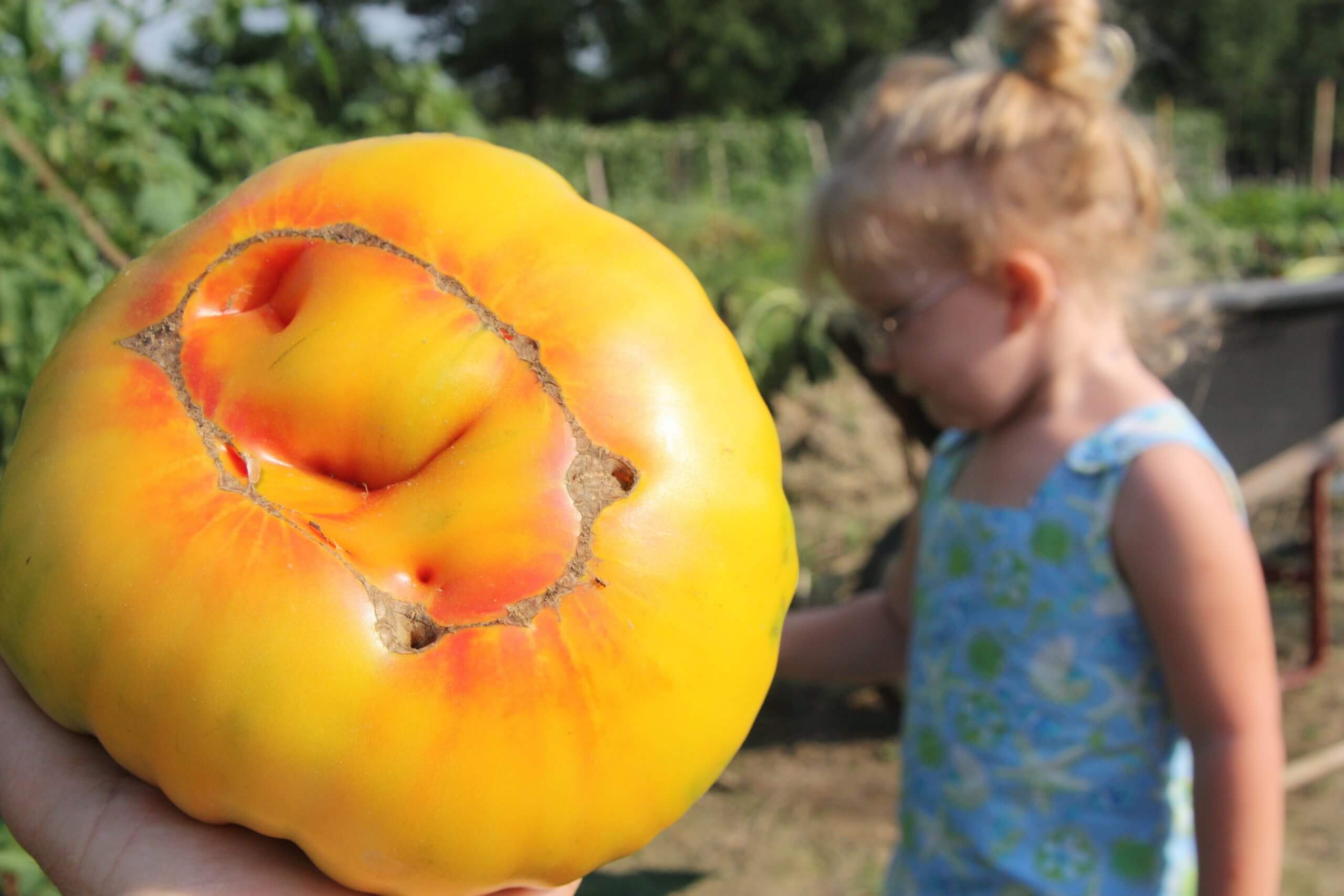
Tomatoes come in all colors, shapes, and sizes and their flavors are surprisingly variable. In my garden, I always choose several slicers, sauce tomatoes, salad tomatoes, and cherries each year. Some of my favorite pickings include the heirloom red and yellow slicer ‘Gold Medal‘, the French salad tomato ‘Crimson Carmello‘, and orange beefsteak ‘Kellogg’s Orange Breakfast‘. My favorite sauce tomatoes are the Italian powerhouses ‘Red Pear‘, ‘San Marzano Redorta‘ as well as the salad-sized ‘Principe Borghese‘, which is touted as the best tomato for sun drying. My cherry tomatoes of choice are the sweet, golden ‘Sun Gold‘, tiny red ‘Matt’s Wild Cherry‘, and delectable yellow and red ‘Isis Candy‘. All are beautiful and have exceptional flavor.
Enjoy Your Tomatoes
This is the easy part. Lavish burgers with big, hearty tomato slices, eat them fresh in salads or make homemade tomato sauce and salsa. To extend the season, freeze whole tomatoes and sauce for winter. (This generally requires at least ten healthy tomato plants to provide enough to store through winter.)
Growing tomatoes is gratifying if you follow the proper steps and give them the best care. If you do it right, you should have more than enough tomatoes to enjoy and share. I wish you the best tomato season!
